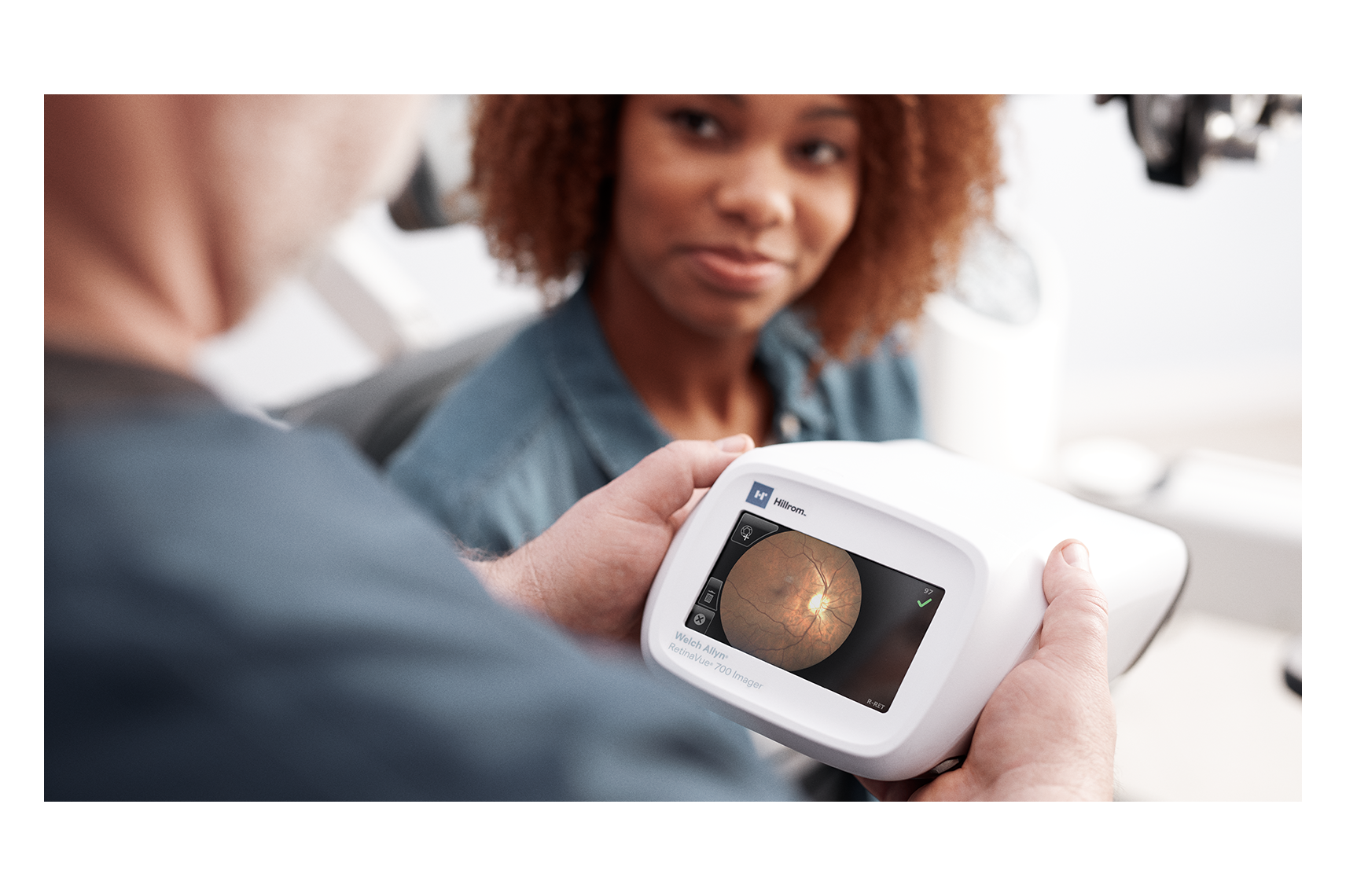HELP
CLOSE GAPS1
LOWER COSTS2
IMPROVE ACCESS3
The Welch Allyn RetinaVue care delivery model enables simple and affordable4 diabetic retinopathy screenings within primary care settings. With teleretinal programs, healthcare organizations and payors can help reduce costs2, improve care3, and close vital gaps in diabetic care.1
REQUEST A CONSULTATION
Arrange a no-obligation consultation to learn more about the RetinaVue solution.

Please download the payor Ebook to learn more about RetinaVue care delivery model.
Improve HEDIS, STAR and HCC risk factors by closing gaps
See how the RetinaVue care delivery model helps you close this crucial gap in diabetic care - and aligns with your value-based care initiatives - by enabling easy and affordable diabetic retinal screening anywhere the patient is - including primary and mobile care settings.
Improve HEDIS, STAR and HCC Risk Factors by Closing Care Gaps 1
Intercepting patients during routine primary care office visits with a teleretinal program, such as the RetinaVue care delivery model can help providers achieve up to 90% documented compliance with diabetic retinal exams in just 12 months.1
The RetinaVue care delivery model supports value-based care and quality programs - and more importantly, the opportunity to save more patients’ vision. Learn more in our eBook, The Solution is in Sight, The Complete Guide to a Successful Teleretinal Program.

Teleretinal programs can achieve up to 90% documented compliance with diabetic retinal exams in just 12 months.1



Help Save Vision for Patients Living with Diabetes6 in Primary Care
Diabetic retinopathy is the leading cause of blindness in working-age adults.5

95% of vision loss due to diabetic retinopathy can be prevented with early detection and treatment.6
RetinaVue Care Delivery Model
Help preserve the vision of your patients living with diabetes with a simple eye exam, that takes minutes to complete, for diabetic retinopathy detection during routine primary care visits. Baxter delivers the three keys to a successful teleretinal program:

Simple and Affordable Hardware

Secure Software Network

Nationwide Services and Support
- Mansberger SL, Gleitsmann K, Gardiner S, et al. Comparing the effectiveness of telemedicine and traditional surveillance in providing diabetic retinopathy screening examinations: A randomized controlled trial. Telemed J E Health. 2013 Dec; 19(12): 942-8.
- Newman, M. (2009) Fiscal Impact of AB 175: Analysis of the Cost Effectiveness of Store and Forward Teleophthalmology, Blue Sky Consulting Group for California Health Care Foundation, www.chcf.org/wp-content/uploads/2017/12/PDFFiscalImpactAB175AnalysisTeleophthalmology.pdf.
- Liu Y, Swearingen R. Diabetic eye screening: knowledge and perspectives from providers and patients. Curr Diab Re. 2017 Aug 31; 17(10):94.
- Cuadros J, Bresnick G. Can commercially available handheld retinal cameras effectively screen diabetic retinopathy? J Diabetes Sci Technol. 2017 Jan; 11(1):135-7.
- Centers for Disease Control and Prevention. Vision Health Initiative (VHI). https://www.cdc.gov/visionhealth/basics/ced/ Published September 29, 2015. Updated June 3, 2020. Accessed September 9, 2022.
- New Treatment Options, Better Hope of Preventing Vision Loss from Diabetes I National Eye Institute. https://www.nei.nih.gov/about/news-and-events/news/new-treatment-options-better-hope-preventing-vision-loss-diabetes. Published November 19, 2015. Accessed September 9, 2022.


